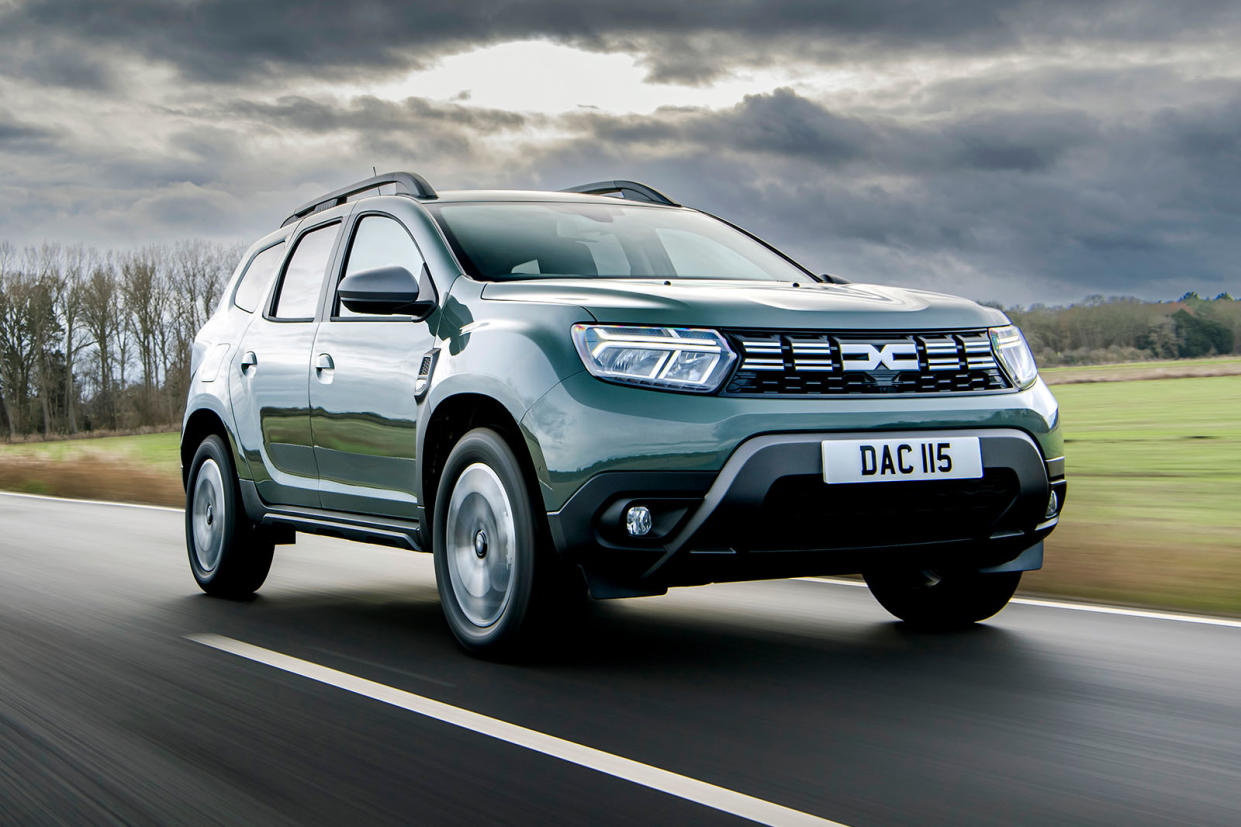Dacia Duster

The Dacia Duster ushered in the very beginning of the Dacia story, at least as far as the UK market is concerned; and so perhaps us Brits will always think of it as the Romanian budget brand's formative model. Back in 2013 (when the Dacia brand's UK launch happened), Autocar liked the Duster, we rated it and, along with its Sandero, Sandero Stepway and Logan MCV range-mates, we watched it get off to a flying sales start.
Dacia sold just over 25,000 cars in the UK in 2017, and claimed more than 1% market share: more than Lexus, Alfa Romeo and Jeep managed between them. And now? Well, while other brands struggled through the pandemic years and the chip shortages and recession that has followed, Dacia has blossomed. It now makes Europe's second biggest-selling new car (the Sandero supermini); in the UK, at least, sales of the Duster aren't far behind its smaller sibling.
The second-generation Duster is a car whose dimensions are almost identical to that of the one it replaces, but on which there have been key styling and architectural changes wrought and which has an all-new interior offering more space and better occupant comfort and convenience than its predecessor.
The Duster is set to continue where the last one left off, having that ‘shockingly affordable’ sub-£10k entry-level price, but also developing in ways well beyond its predecessor.
This is a car in which cabin noise at a cruise has been halved in comparison to the old Duster, says Dacia. It can be had with equipment never seen on a Dacia before, from a multi-view reversing camera to keyless entry and a blind-spot warning active safety system. It still comes with the option of two driven axles and more than 200mm of ground clearance, but now you can have leather seats and climate control with it.
So is this still the simple, functional, cheery Duster we knew before? We chose to test a mid-range 1.6-litre SCe 115 4x2 Comfort model to find out.
Dacia Duster design & styling
While the second-generation Duster’s outward appearance is similar to that of its predecessor, Dacia insists that every single body panel on the SUV is new.
The styling changes that have been made seem relatively subtle and minor at first glance, but when you look closer and consider them together they do work to give the Duster an appearance that’s more sophisticated than before.
At the front, the design of the headlight clusters has been overhauled, while the headlights themselves have been moved closer to the lateral extremities of the front end in order to emphasise the Duster’s width. There’s a new grille, while the base of the car’s windscreen has been brought forward by 100mm and the screen itself is now more steeply raked (or less upright) to give the impression that there’s more room in the cabin.
Round the back, new tail-lights – which could almost have been lifted straight off the back of a Jeep Renegade and rotated through 45deg – are the most noticeable change.
The car received Dacia's new corporate brand logo on its grille and interior along with the rest of the Dacia range late in 2022.
A fairly broad range of engines are offered in the car - among them a diesel, for buyers who still value the blend of efficiency and torquey appetite for work that diesel offers. The Duster's 1.5-litre four-cylinder diesel produces 113bhp, and makes the car miss out only narrowly on 62mph from rest in ten seconds. On the petrol side, meanwhile, you can choose between 1.0-litre three-cylinder- and 1.3-litre four-cylinder TCE turbo motors of between 89- and 148bhp; with a 98bhp 'Bi-Fuel' option adding an LPG-fuelled option. There's a two-pedal 'EDC' automatic option on the uppermost petrol option, while four-wheel drive can be had on the diesel.
Beneath the revised exterior sits Dacia’s ‘B0’ platform architecture – the same that underpinned the previous Duster and last-gen Dacia Sandero and Dacia Logan, as well as the Russian-market Lada XRAY and Lada Largus.
Suspension comprises uncomplicated and low-cost MacPherson struts and an anti-roll bar at the front, while the hardware at the rear differs depending on the number of driven wheels. Two-wheel drive Dusters make do with a torsion beam (and have a larger boot as a result), while those with four-wheel drive use a multi-link arrangement.
Electric power steering is new for the second-generation Duster, while some effort has also gone into improving safety. Blind-spot warning is available for the first time, albeit only on top-spec Prestige models, while ABS, emergency brake assist, electronic stability control and traction control are standard across the range. Because this is practically the extent of the Duster’s active safety systems, its Euro NCAP rating isn’t great: a left-hand-drive variant scored just three stars in 2017.
Two-wheel-drive petrol Dusters are claimed to weigh 1179kg. Our test car (mid-spec, with optional spare wheel and a full tank of fuel) indicated 1286kg on the scales, with that mass being split 59:41 front to rear.
]]>

